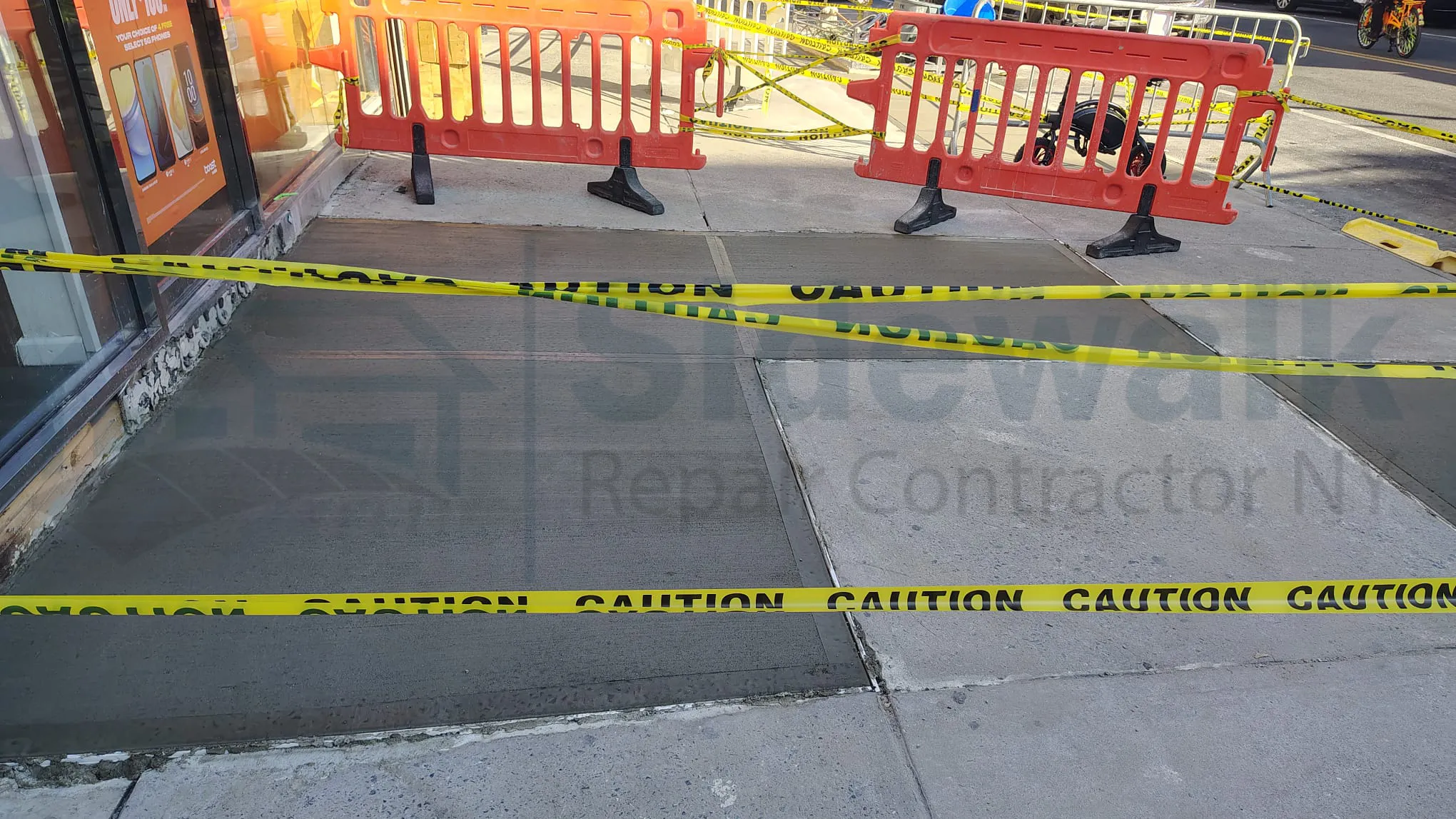
How Long After a Freshly Poured Sidewalk Can You Walk On It
The right time to step on a freshly poured sidewalk for typical foot traffic is usually after 24 to 48 hours. This window allows the surface to dry out enough so that it can support foot traffic without getting destroyed.
Keep in mind that the weather, temperature, humidity and type of concrete mix can alter the time it takes to cure. Higher temperatures may be needed to speed the process during cold or wet weather.
So continue reading to learn more about exactly how much time the concrete sidewalk takes to dry, cure and gain its full strength to withstand the test of time.
Sidewalk’s Curing Stages
When concrete is poured, a chemical reaction called hydration starts. Not only does the water dry up, but cement and water react together, forming new, strong compounds known as CSH gel, often referred to as the “superglue” of concrete for its powerful binding properties.
Concrete curing typically occurs in four key stages. The more thoroughly your sidewalk progresses through each one, the sturdier and longer-lasting it will be.
The First 12 Hours: A Complete No-Go Zone
In the initial 6 to 12 hours after pouring, concrete is in its most fragile state. This phase is called the initial setting period, and during this time, the surface may appear dry, but it's still extremely soft underneath. Walking on it at this stage can cause surface damage, imprint patterns, or even disrupt the internal curing process.
Even light touches, say, a curious child poking it or a pet wandering onto it, can leave permanent marks. This is why professional contractors emphasize strict access control during this phase. Keeping the area roped off and monitored is key to preserving a clean, even finish and preventing structural issues that could develop later.
The First 48 Hours: TipToe Territory
After 24 to 48 hours, the surface of the concrete has typically hardened enough to support the light foot traffic. At this point, the sidewalk may look ready and you can technically walk on it with extreme caution. This stage could be described as the tiptoe territory, because although the concrete has firmed up, it hasn’t reached anything near full strength.
Walking is permissible, but heavy items like trash bins, ladders, or wheelbarrows should be kept away. Even dragging your feet or wearing high heels could scuff or chip the surface. While this period might offer some flexibility for light use, it’s not the time to resume normal activity.
Day 3 to 7: The Sidewalk Starts Gaining Strength
Between the third and seventh day, the sidewalk begins to gain significant strength through a process called hydration, a chemical reaction between water and cement that forms a strong bonding agent. The result is a much tougher slab, capable of supporting normal foot traffic.
You can now walk on the sidewalk as you typically would and, in some cases, begin placing lighter items near or around it. However, the concrete is still developing its final strength, so it’s best to avoid any harsh treatment. Don’t place sharp objects, furniture legs, or anything that applies concentrated pressure, as this can still damage the surface or compromise its finish.
Day 28: Full Strength and Ready for Everyday Use
By the 28th day, your sidewalk has typically reached about 99% of its design strength, making it ready for full, everyday use. The hydration process has slowed considerably, and the slab has hardened enough to withstand regular foot traffic, strollers, bicycles, wheelchairs, and even light lawn equipment.
This is the point where your sidewalk is truly cured, and you no longer need to worry about harming the finish through normal use. That said, using caution with sharp tools or dragging objects across the surface is still wise if you want to preserve its look over time.
Why Proper Curing is Crucial Than You Think
It’s easy to underestimate how important curing time is, especially when the sidewalk looks dry and solid after just a day or two. But walking on it prematurely can lead to small imperfections that become bigger issues down the line—surface flaking, cracking, or even structural failure in extreme cases.
Letting the concrete cure completely ensures your sidewalk remains safe, durable, and visually appealing for decades to come. This is especially important in climates with extreme weather swings, where improperly cured concrete is more vulnerable to environmental damage.
When in Doubt, Give it More Time
There’s no downside to being patient. If you’re unsure whether your new sidewalk is ready, it’s always best to wait a little longer rather than risk long-term problems. A few extra days of caution can help you avoid expensive repairs, preserve your property's appearance, and ensure the sidewalk’s strength holds up for generations.
Conclusion
Curing concrete properly isn’t just about timing; it’s also about technique, mix quality, weather conditions, and protective measures. That’s why it’s important to work with experienced contractors who understand every phase of the process. Understanding the concrete curing timeline is essential not just for avoiding the surface damage but also for ensuring the long-term durability and structural integrity.
